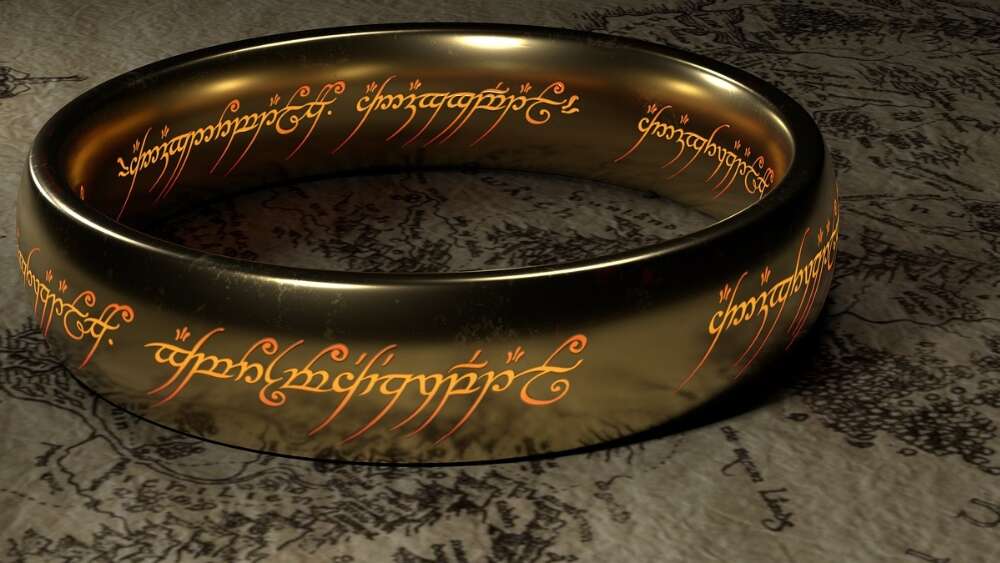'The Lord of the Rings' is sort of an Easter story
The real magic of the true myth
Let’s just get this straight: The Lord of the Rings is not a religious allegory. In the foreword to the second edition, J.R.R. Tolkien said so himself: the novel, he wrote, is “neither allegorical nor topical … I cordially dislike allegory in all its manifestations.” Still, that doesn’t mean that The Lord of the Rings isn’t the best high-fantasy Easter narrative, ever.
Granted, the novel’s religious aspects don’t exactly keep diehard fans up at night. Plenty enjoy the high drama of hobbits, dark lords, wizards and elves tussling over the one ring, unbothered by Tolkien’s declaration that The Lord of the Rings was a “fundamentally religious and Catholic work”.
Yet in Tolkien’s imagination, world history and high fantasy converges on 25 March – a date laden with Christian significance. Which means that whether you happen to be hobbit or human, religious or not, that Lord of the Rings tale you love is sort of an Easter story. From a religious read of the novel, anyway – one that studiously avoids the a-word (allegory, that is).
Buried in the appendices (yes, The Lord of the Rings is that kind of novel), Tolkien gives 25 March as the day the one ring is destroyed in the fires of Mount Doom. It also happens to be the day that Christian tradition, in which Tolkien was steeped, regarded as the day of Jesus’ crucifixion. This is no coincidence, according to Kaitlyn Facista, who runs the online community Tea with Tolkien.
“Tolkien didn’t have to give us a date for it. Tolkien doesn’t just throw things around,” she told the Life & Faith podcast. “As someone who knew his Christian history and tradition, he chose this very specifically.”
And that’s just the start of the allegorically rich rabbit hole: 25 March, to put it mildly, is loaded with Christian significance. Kaitlyn, a Catholic, says Catholics observe 25 March as the Feast of the Annunciation, or the day that the angel Gabriel visits Mary to break the news that she will bear the son of God. “She accepts this and it’s like the beginning of her quest, you might say, her mission in life,” Kaitlyn said.
The destruction of this tiny but all-powerful ring is somehow caught up in the birth, life and death of Jesus.
Both the incarnation and crucifixion of Jesus, then, are linked with 25 March, the day the ring is destroyed and, along with it, the power of the dark lord Sauron. (The fellowship of the ring, by the way, sets off on their mission to destroy the ring on 25 December, another date that’s somewhat of a big deal within Christianity.) The destruction of this tiny but all-powerful ring is somehow caught up in the birth, life and death of Jesus.
Which begs the question: what, exactly, is the ring? Sure, Tolkien ruled out any straightforwardly allegorical reading. But the temptation to read the novel in a religiously symbolic way is just as tempting as, well, the ring itself. I can’t help but think of the ring as, basically, “sin” on your finger.
If sin expresses the desire of the creature to usurp the rightful rule of the creator, then it names the very human urge to greedily grasp for more than one’s fair share. Which explains why almost everyone in The Lord of the Rings wants to possess the ring for themselves. Like sin, the ring is very appealing and seems to offer a shortcut to all that we want: power, long life, results. And critically, the ring deceives those who hope to wield it, even in the service of a good cause.
Just like sin in the world, the “sin on your finger” problem can’t be overcome by mere mortals.
Even Frodo succumbs to its corrupting power. The hobbit, who has faithfully ferried the ring to the fires of Mount Doom, decides to keep it for himself. It’s a shocking moment, one when all hope seems lost. But even if The Lord of the Rings is clear-eyed about human – and hobbit – frailty, there are even greater powers at work.
“We would all be tempted by the ring. I can’t think of a single person who wouldn’t be. The whole idea of the ring is that it is so powerful that no one can stand against it,” Kaitlyn said.
“That’s when fate has to step in. It’s through fate that Gollum brings about the destruction of the ring. When there is something so evil and so powerful, we can’t stand up against it on our own. We need help.”
For Kaitlyn, fate describes the providential hand of God – or his equivalent in Tolkien’s mythos – working his will through the events of the entire story. Despite Frodo’s failure, Gollum’s actions result in the happy accident of the ring’s destruction – an event Tolkien calls a “eucatastrophe”.
This is a “good catastrophe”: a sudden turn of events that brings about an unexpected happy ending. Humans and hobbits alike may fail, but that’s OK. The mysterious workings of Tolkien’s God – within the novel and without – will not. Just like sin in our world, the “sin on your finger” problem can’t be overcome by mere mortals. Ultimately, it takes God to save the day.
The eucatastrophes of The Lord of the Rings echo the strange, surprising ways that God works in our world.
All of which makes Tolkien’s idea of eucatastrophe deeply Christian. It is the forever surprising, unexpected act of divine grace. And as Tolkien saw it, the eucatastrophes of The Lord of the Rings echo the strange, surprising ways that God works in our world.
Take the first Easter. Jesus’ sacrificial death on the cross, offered as a ransom for the sin of the world, doesn’t end in despair but in an empty tomb. A story of shame and brutal death ends in resurrection, the marvellous claim that he is risen. This is a eucatastrophe-worthy ending to the sorry business of the cross: an ending that is simultaneously a beginning.
“The resurrection was the greatest eucatastrophe possible in the greatest Fairy Story,” observed Tolkien in one of his letters. For him, the Christian gospel was the greatest fairy tale of all – which is not the same as saying that it is fanciful or made-up.
“Tolkien had this idea of the true myth that all of our myths will ultimately point us back to,” Kaitlyn explained, “which is what he sees as the Christian myth and our history within that.”
At this point, every Christian who loves Tolkien feels epic feels: joy, excitement, gratitude, ecstatic relief. Because the magic is real. The Lord of the Rings isn’t escapist entertainment for a disenchanted age, but a thoroughly Christian vision of our world.
The events of 25 March in Middle-Earth and our world made all the difference. For Tolkien, they proved the hinge upon which all history, and more, would turn.
“Legend and History have met and fused,” Tolkien exalted.
“God is the Lord, of angels, and of men – and of elves.”
Justine Toh is Senior Fellow at the Centre for Public Christianity. You can listen to her interview with Kaitlyn Facista here.
Email This Story
Why not send this to a friend?



